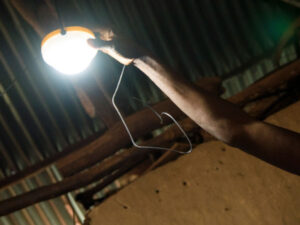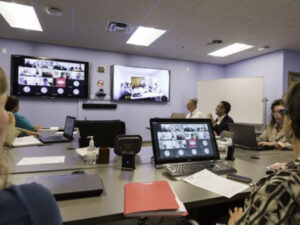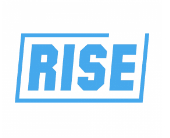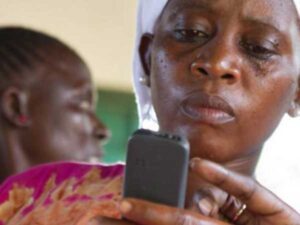
In Kenya, Phones Replace Bank Tellers
Building on the widespread use of mobile phones in Kenya, Angaza has developed applications to provide people with financial services.
GoodWeave International works with businesses and consumers to ensure that businesses throughout the supply chain are free from forced and/or child labor. Their work brings visibility to hidden elements within the supply chains and focuses on protecting workers, especially children, from labor abuses.
Nina Smith of GoodWeave International spoke with Jessica Kantor on July 21, 2023. Click here to read the full conversation with insights highlighted.
Jessica Kantor: Can you please introduce yourself, your organization and discuss the problem that you’re addressing and how are you addressing it?
Nina Smith: My name is Nina Smith. I’m CEO of GoodWeave International. The problem we solve is the problem of child labor, globally. There are about 160 million children in the world today that are being exploited in supply chains, in work, in one form or another. Either in supply chains that make the products that you and I touch and use every day, which also includes domestic work inside of homes all over the world, and many other forms of labor, including sex trafficking and those types of activities. It’s very prevalent.
Another slice on that problem is that this is happening in some of the most vulnerable communities around the world, and the nature of supply chains in general is such that buyers, let’s say global brands that are buying products and placing orders with manufacturers and export countries, generally only take responsibility for the conditions at the place where they place the order. So there’s this huge industry of corporate social responsibility of auditing, social audits. There’s massive financial investments in these programs. But actually, what happens on the ground is that the export manufacturer is subcontracting the orders, then they get subcontracted again, and the supply chains are very obscure. There’s not a lot of visibility into who’s making the products and under what circumstances. The problem gets hidden pretty fast. There’s widespread documentation on the problem, the US Department of Labor produces a list called US DOL’s list of goods made by child labor and forced labor, and they have documented, I don’t know the latest count, but we can confirm about 157 different products in 70 plus countries where this is happening.
The root causes are complex, but we really focus on the interrelated issues of forced labor, gross underpayment of wages, and a range of worker rights issues. As an organization, to tackle child labor, we believe we have to address the supply chain. We have to work with the private sector in order to tackle it, and address interrelated issues like worker rights, including wages and these sorts of things.
We have a market-driven model, and we believe companies need to be held accountable, but that there also has to be deep work on the ground in worker communities, where often cultural beliefs also can keep these problems perpetuated as well. So there are lots of root causes, but we, as an organization, simplify it by saying there’s a lack of responsibility on the part of the buyer to understand the full supply chain in order to really be able to ensure that rights and protections are there for workers and families.
Jessica Kantor: Can you note, on a high level, all of the points in which you’re engaging with people, policymakers, companies, the community? An overview of the actions that are being taken by GoodWeave.
Nina Smith: Yes, and there are many systems and actions. We can start at the market, we have a consumer-facing label that has a symbol, and a unique number on it that can be traced back to where the product was made. We invite the consumer to make a choice at the point of purchase to make purchases that are pro-human rights, child-friendly, and purchase goods that assure no child labor was used. We work with companies, and this is really the driver, we feel that our corporate partnerships are essential. We work with, today, 420 plus companies in 22 countries that agreed to change their practices in ways that assure there’s no child labor.
The reason I say it’s market-driven is because when a buyer, an importer or retailer signs up with us, they are basically requiring their suppliers in manufacturing countries to also associate with us. We call them licensees, both the buyers and the sellers, and they are agreeing to follow a set of standards that are based primarily on international labor organization conventions, global conventions, but also national law. They’re voluntary standards, but there’s this market leverage to get compliance with these voluntary standards. We have teams on the ground through our affiliated local organizations, with all local teams, that are in and out of the supply chains every single day, verifying that the company’s full manufacturing supply chain is compliant with those standards. Core to those standards is no child labor, no forced or bonded labor, and that transparency and access is provided, such that we can verify those conditions.
It’s pretty unique in the sense that we go to the full supply chain. A typical company program verifies factory working conditions, but in fact, often, and we know this is widespread in textile manufacturing, the majority of workers are outside of that factory, they are working in obscurity, they are home-based workers or small production units. Sometimes it is other factories that don’t get attention from the buyer, and therefore aren’t being asked to follow that company’s policies and aren’t reached by local labor laws either. We’re constantly bringing visibility to all the workers, applying the criteria, and there’s a market incentive for the producers to ultimately change over and follow the standards. To your question, we’re working with all producers in the supply chain – importers, retailers, exporters, subcontractors, and then directly with workers themselves.
A lot of what we’re doing is talking to workers, we’re interviewing them. When we identify abuses, we immediately work on a remedy. We don’t just say, “Okay, company, go fix this.” In fact, we have teams that are responsible to follow a set of steps to make sure that the person has a way out. And in particular, our focus is on children. We’re freeing children from these all the time, day in and day out. We have near-term and long-term rehabilitation that we provide, of course with consent of the family, guardians, and the child themselves. It involves counseling, it can involve what we call center-based rehabilitation, meaning they come to a transit home and get intensive support for a period of time, or what we call community-based rehabilitation. There’s different pathways depending on the case, and it’s really one by one work within a social change system.
We have lots of stories, and data around all of that work, which helps to inform our own strategy. We work with the population, we’re very hands-on. We work across communities. We have intensive programs that work on prevention and addressing root causes, that, again, happens at different points, but a lot of that is very community-based work with workers and in their communities. In India, for example, we have a program called Child-Friendly Communities, where people from within the community become local facilitators in these programs, they get trained, there is a methodology that starts with a full community mapping of what’s going on in the households. What’s the status of the children? Are they in school or not? What’s the infrastructure to provide education? How can we strengthen that infrastructure? How can we ensure that the next time we come back and do a survey, the children who are out of school are in school, and that the community at large has a stake in that?
We engage a lot with local governance. In the case of India, it’s with government mandated child protection committees, and building their capacity, or with heads of school and working to strengthen the skills of teachers and the accountability of the schools to the community, the parents, and everybody. That’s a flagship program, but we are really working that way in the worker communities, in a range of ways. So that’s the Child-Friendly Community model, but it’s a little different in some of the urban environments. The idea is to make sure that we are creating responsibility at the top of the supply chain, and also from the bottom-up. They are reinforcing, and there are all kinds of benefits to working that way.
In a nutshell, you can think about it as, we work with the companies and the market to drive visibility down into the supply chain, get to where there’s exploitation and abuse, stop it, transform individual lives, and then work on addressing the root causes of the problems to create a permanent change in a locally-owned process.
We have been working with governments – labor ministries, ministries of education, and those kinds of actors as well. In the import countries, there’s a lot going on in the regulatory space so being at the table for some of these discussions about how the laws are now requiring companies to go deeper, better on their human rights due diligence, and how to make those things actually reach the people who need it. So I’ll stop there. That was a lot.
Jessica Kantor: How exactly are you measuring success? What are your metrics right now with so many things that you’re doing?
Nina Smith: There are lots of different ways, but I think the most significant ones are looking at how the market is changing. We have a set of metrics that are really focused on what’s happening in the market. I mean, when we started this work, no company wanted anything to do with us. It was like, “We don’t need oversight, we don’t want to pay the money.” ‘Cause there is a fee structure involved. “We know more about our industry than you do.” That kind of a thing. Part of it is about market share and market uptake. We measure in our most mature sector, which is in the handmade carpet industry, where we started, and our focus is in South Asia.
We measure the total market share that carries our certification. We track the change over time, and the number of companies. We actually try to, every single year, through surveys and other data collection, look at how businesses are evolving and changing to focus on these issues. So that’s one piece. We have to be successful in the market in order to drive the change down the supply chain, if you think about it. That is a critical factor, even though it’s not measuring the ultimate beneficiaries. If we can’t get change there, we can’t get change on the ground, so that’s super critical. Then we look at our reach within supply chains, so we look at our coverage, how many of the production sites are compliant with the requirements, and how is that changing over time? Especially when we go into new regions, or even just individual new supply chains, we end up finding a lot of problems. And then over time, those supply chains become more resilient to these issues, so we can measure that over time.
Of course, we can look at the actual number, what we call major non-compliance, which are cases that we’ve had to handle. Partly, that is about understanding what’s happening, what are the dynamics on the ground and what’s changing? That’s not going to give us our true impact, but it’s very important to understand how the dynamics are changing, also within the supply chain. In the regions where we’re working, we can look at how things like school enrollment rates for children change over time, and also learning levels, and whether the children are at the correct learning levels. Because often, school enrollment doesn’t mean they’re going to school, it doesn’t mean they are learning, it doesn’t mean they’re not working. But we believe there’s a direct correlation between children who are going to school and thriving, and an absence of child labor.
There’s a lot more, but those are the big indicators that we measure every day. We have several independent evaluations that get conducted, and look at other kinds of things. For example, both in Afghanistan and in India, we’ve had the opportunity to have deep evaluations of our community-based work. We’ve been able to document the way in which beliefs have shifted for parents and communities about the importance of their children going to school versus learning. We’re able to look at that big behavioral shift through some of that evaluation work that’s been done, and we’ve been able to do some of the same around the exporters and manufacturers, looking at how their behavior is shifting and how they look at their responsibilities as an employer differently. Similarly, we’ve been able to do a lot of qualitative research, case studies and documentation, looking at how the interventions are changing the reality for workers themselves.
Jessica Kantor: What makes your approach distinctive in this space? Are you one of the few who are working towards these goals, or are you one of many?
Nina Smith: It’s become a more crowded space, but wasn’t crowded at all when we started. We were probably the pioneers in this space. I think there are a few things. One is, at the intersection of human rights and business, labor rights and business, we’re one of the few organizations that’s truly respected by companies and the labor community, the worker community. In other words, we aren’t a cover for companies, but we’ve found a way to get companies to work with us, which is not easy, and we’re seen as legitimate in working on the ground. So at the highest level, I think we’re seen as one of the few organizations who’s able to work at that intersection successfully.
The reason why is because we go deep. We’re deep on the ground, we’re embedded in the communities in which we work. The communities themselves drive a lot of the kind of solutions that we deploy. We’re flexible regionally because of that, we really work in accordance to what the scenario is on the ground. That in and of itself is not earth-shattering in the social entrepreneurship world, but it is when it comes to this space, working with workers in global supply chains.
The other piece is, and I alluded to this talking about the problem statement, is that we’re getting to where no one else does. It’s hard enough to get a credible sort of factory audit. That is a very crowded space. It’s called social auditing. Most companies work with social audit firms that can be either for-profit or non-profit. A lot of companies also have their own programs that assess worker rights within factories, and they need to have that, they need to have that kind of top level oversight. But they’re rarely seeing the problems, they’re rarely addressing the problems, and there’s almost never a remedy for workers.
What we are doing is, saying, “You have to work differently. You have to work deeper. You have to be willing to see and acknowledge every worker that’s involved in making your goods.” We get in there and reveal the issues, and then we work to restore the rights of individuals that have been trapped as victims of forced labor and child slavery. It’s very full circle, very holistic. We are continually working on root cause issues, so that there’s a permanent change. I don’t think there’s any organization that works on these issues like we do that’s fully holistic. It’s more like, “You’ve got a problem over there, factory, go solve it.” That’s it.
Jessica Kantor: You spoke a little bit about this already with being embedded in the communities, but what are some of the insights, or advice, that you would have for someone who wants to replicate what you did? Maybe not even in this particular space, but use the model that you’ve created to create change?
Nina Smith: It’s interesting, because now this is becoming a mature field, but literally no one was doing this in the beginning. Sometimes I look back and think, “Did it take us too long?” We’re 25 years down the road, those first 10 years were hard. It was company by company. Each company that signed with us was a long process. It took literally 10 years for our very first big company to sign with us. There was no precedent for this. If we’re talking to people that are starting something that’s totally different, that is a new model and working within a space where there isn’t a readiness, I think some of the recipes for our success were linked to knowing where we wanted to work. Not waiting for the market to bring us to where we needed to go, but identifying where this problem is happening and figuring out how to get traction. Understanding our theory of change and then relentlessly going after it, and being patient.
A long time ago we did a deep-dive on how our Nepal office got going. We got all the stakeholders involved in each country where we started up. If we want to work with industry, we have to have some of the industry there at the table, we are going to have to have all the child rights NGOs sitting there at the table, you have to have some government at the table. And there was a lot of arguing and battling for position, for what it was going to look like, but ultimately, everyone had a stake from the beginning.
The very first companies that joined in Nepal, joined before any company would buy their goods with the label on it. It was early days, but those people today are still bought in, some 30 years later. They’re still there safeguarding the core values, and the work, and convincing their colleagues to be part of this movement. The same goes for all the stakeholders that we’ve worked with over the years. It’s that opportunity to have them involved across the organization. I think the art of it is, how do you manage something like that, and move forward, without getting bogged down in it? I think our recipe for success is making sure that our global board, our local boards, we have several other kinds of governance bodies, expert committees, we’re all embedded with people who had a stake in this thing succeeding, and who were positioned to continue to help us get that foothold in.
Proof of concept is also so important. It took a little time, but we were able to show lives transformed. I failed to mention that when you were asking about impact, I mean, there are thousands of children you could interview who would tell you about how their lives were changed. We were able to, early on, demonstrate the transformative nature of the work, whether it was changing the way companies are behaving or changing the lives of the individuals involved. I think having that early proof of concept is so important. I mean, sometimes I wonder if I think too small, but I have to say, I hear about people starting new organizations, and they’re starting with buckets and buckets of money. We did not. We started with a lot of passion, with a lot of stakeholders around the table that were completely driven to make this work. I think we’ve been able to maintain a lot of credibility and impact because of that. To start off big, and say, “We know how to do this.” At the outset, it is not the right way to proceed. I’ve seen millions and millions of dollars wasted that way. So I think that’s also really important.
Jessica Kantor: In that same regard, what are some things that you guys did, it could be in the beginning or it could be now, that didn’t work? And what were those lessons?
Nina Smith: Well, I mean, there were so many things. The first thing that popped into my head is, we really wanted to work in Afghanistan, and we worked really hard to convince a big government donor to come on board and help us make that happen. We had an amazing staff and the issue was so compelling there. I mean, the ground scenario for children in that country is so bad, and there’s so much child labor in the industries where we’re focused. We miraculously got registered, ramped up, had amazing programs going on, and it was so hard. It was sucking so much of people’s energy to keep that program going, and we did keep going, but had a constant debate among staff and our board about whether to keep going or not. We felt it was so compelling to keep going, but in the end, when the Taliban came back into Kabul and took over, we had to shut down. All of our staff have tried to flee. When I look back, I think maybe we should have made that hard decision a lot sooner, because we’re pretty small, we’re sort of a small, punch above your weight kind of team, and we put a lot of energy into something that, in the end, the impact was relatively small.
There was a special commission set up by the government to stop child labor in the carpet industry as a response to what we were doing. There were things that looked big, that looked promising, but the signs were always there that it wasn’t going to really make it. When I think back to the amount of work I and our deputy director at the time put into it, the fundraising focus was so important because it was so hard to get money. But that wasn’t smart, there had to be a different way forward. It really pulled our energy away from other elements.
The other thing we could have done differently, and I take responsibility for, is we’re so focused on the deep part of our model, and the fact that so much of that we do ourselves. I think we could have grown quicker and more strategically if we had been looking more for strategic partners early on to implement and take some of the headaches of implementation out of our center. There’s always a trade-off of going deep and having impact, an impact you can be confident about.
A lesson that we learned, but maybe a little too late, was we were ahead of our time as an organization. Before, there wasn’t a space. Right now, there’s this huge space on modern slavery and human trafficking, but it didn’t exist before when we were doing this. We were one of the first on the block, and then one private donor stepped into the space, I always credit them, because it was the first donor ever really focused on these issues. Then more foundations started doing carve outs around these issues, or focusing in a big way on these issues, and then of course, some government donors around the world were coming in.
When the money came, suddenly everyone had a program working on these issues. There are some great organizations that have grown up and stepped into this space, but I think we took too long to own it. It took us quite a bit of time to say, “Hey, wait a second. Everyone’s jumping in here, and we’re the ones with the deep knowledge, and we need to rethink how we show up in this space, and what our scaling strategy is.” I think we could have done it five years sooner, and maybe we’d be a different organization. Those are the trade-offs that I think every leader, every organization, is thinking about.
Jessica Kantor: Those are really helpful examples. I want to go back to the Afghanistan example, and this is probably going to be a hard question, but if you had to summarize that in a general, “Here are the red flags that we should have been paying attention to,” do you have a few that organizations can learn from? Things that others should pay attention to, that, if these aren’t working, then maybe we need to either revamp this model, or take a step back?
Nina Smith: I mean, for one thing, in India and Nepal, which are the countries where we have a huge presence, we aren’t fully self-sustaining, but we have a level of sustainability through the fees that we collect from companies to implement our program. We were never going to have that in Afghanistan. Ever. So one issue just had to do with sustainability, is this ever going to be sustainable in a different way than having to get huge grants? Not even just small grants, but huge grants.
The other is looking at whether the model frameworks work in the specific context. For example, where we work in India and Nepal, we have basic regions where these kinds of goods are made. So we have a regional presence and have good knowledge of those regions and the people in those regions. In Afghanistan, the supply chains were always moving around because of security issues. There were whole regions where production was happening where we couldn’t go because of security, so we couldn’t fully implement our model because it involves a kind of reach that we absolutely couldn’t get in Afghanistan. We could have retooled, but we kept trying different ways with so much grit and passion, feeling like we had to do it. Maybe we could have pulled back, and we could have said, “In a country like Afghanistan, it’s okay for GoodWeave to have a humanitarian program that’s just about providing relief to people, to workers, in a different kind of way, and we don’t need to certify products.” Towards the end, we actually created a framework for thinking about how to work in conflict zones, and places that have deeply difficult scenarios that made it impossible to implement our whole model.
We have a model. The model’s flexible, so it can be adapted to different scenarios, different sectors, and different locations. But there’s a core there that we understand, and when that can’t be upheld, even if it feels so compelling… I mean, it was so compelling, I’ll never regret the work we did in Afghanistan. It was so impactful, it just wasn’t broad enough, and it was so hard. Those are some of the signals, a couple of them, I’m sure there’s many more.
Jessica Kantor: Other than what you’ve already spoken about, of what you learned that didn’t work, are there any challenges that the organization is currently facing that you haven’t been able to overcome, or that you haven’t yet been able to solve?
Nina Smith: Yes. Yeah, I don’t know where to start with those. I mean, one of them has to do with financial sustainability. The issue of fundraising never goes away. And it’s interesting, when you work with the private sector like we do, donors say, “Why can’t the companies pay for it?” But we are still, today, working in a market that is not paying for human rights. And that’s also true with the environment too. This sort of ESG [Environmental, social, and corporate governance] concept is very interesting, but in reality, companies do not pay to make sure that human rights prevail throughout their operation. They will not pay for it and customers don’t pay for it either, so how do we walk that line, going forward, to create new and different interesting projects for donors so that we can keep our core work going, which is so important.
We’re going through a review of that right now, which is why it’s really on my mind, and we will be adapting our fee structure, because I think the market is better now for this so we should be charging more for the real work we’re doing. Also, a lot of regulatory changes that are going on right now will require companies to do more of what we do.
We’re very creative about new ways of framing the work, new ways of expanding the work, but at the end, this day in and day out work, a lot of people are counting on it continuing, and we have to have funding to continue it. So that’s always a challenge.Growth in general is really challenging. Again, how do you keep your credibility, your quality, and your impact intact, while looking to grow in new ways? Part of our strategy now looks at how we can get broader uptake of some of the methodologies that we’ve developed as an organization, and that have worked for us, to get other supply chain actors to also adopt these methodologies. That might be through thought leadership and advocacy, or it might be through direct capacity-building partnerships that we have. We’ve been approached by several organizations that I think have the right kind of structures and orientation, like sustainability standards, that want us to help bring strong child labor and forced labor programming within their operations, but at the end of the day, it’s not their core mission, and they ultimately don’t want to invest in what it takes to do it.
I don’t know how to say it in a more clear way, but it can be very hard to go into partnerships if there isn’t a shared understanding of what a good outcome looks like. And to us, it means going deep on these issues. And I think because there’s such a push in the corporate world now, and in political spaces, to work on these issues, people want quick fixes. And we don’t want to give quick fixes, so it’s hard to find partners that want the same kind of results as we do.
Jessica Kantor: What’s most needed from other actors or partners in order to advance systems level change? Not just from your work, but other people who are either currently in, or need to be in, the space?
Nina Smith: It’s a very interesting time. If you look it up, you’ll see, I mean, the EU has been working on this mandatory human rights due diligence bill that is now moving forward. If you look at government level policy, it’s very exciting when you look at the number of countries that are adopting human rights and due diligence laws that will require a whole different approach from companies around these kinds of issues. The U.S. has one of the most enforceable laws, a forced labor ban in place, where U.S. customs can slap down what’s called a withhold release order, and companies cannot get their product out of customs without demonstrating no forced labor was used in the production. There’s some serious stuff happening.
But I think what we’re going to have to do to make these laws really have an impact is to make sure that those laws are reaching people. It sounds so simple, but actually, if you look at who has to comply with the laws, and what they have to do to comply, the requirements and the guidelines have to be more rigid of what’s required in order to comply. The requirements of laws have got to be more rigorous. And the idea of the buyers, they have to have a higher responsibility, a shared responsibility, with the manufacturers on the ground, around making sure they’re really covering every worker that makes their goods. I mean, there’s so much more, we can talk about the role of consumers. It’s not a big one right now, no matter what anyone thinks. All of us have a duty to make a conscious decision about what we buy. And this whole fast fashion movement has been terrible for workers. Especially in the face of climate change – and there’s a complete interrelationship between climate change, child labor, forced labor, and modern slavery – we’re all going to have to make radical changes in the way we think about our consumption, our travel, and way of life.
Jessica Kantor: How do you see the work that GoodWeave is doing evolving over the next five years?
Nina Smith: We have this core portfolio where we’re working with companies to deepen their supply chain, and everything I’ve described to you. That’s going to keep growing, and we have plans for how we want to continue to grow our core business. But over the next five years, we’ll do several other things. We are going to be doing much more research, and we have a big project underway in Bangladesh focused on closing the evidence gap around some of these issues in countries and industries where there’s a sort of false narrative that this problem isn’t there. Doing professional groundbreaking research, so that there can be action, not just by us, but by all the other players.
Right now, we have this project in Bangladesh in the ready-made garment industry. That industry, I don’t know the exact numbers, but it is about 80 plus percent of the total GDP. It’s a huge driver in that economy. And we’re looking at this issue of seeing what’s going on beyond the factory. Is there outsourcing? What does the outsourcing look like? Is it linked to the global supply chain? What’s the prevalence of child labor and forced labor? What’s happening with wages? We will do more of that kind of work and then call everyone to action – the governments, the companies, and other organizations working on the ground. Research is very important.
We’re getting more involved in advocacy now, just for this very reason I shared, that some of these laws are so exciting, but they’re being designed by people that don’t know what the supply chains look like. So really trying to bring more survivors to the advocacy tables, bringing case studies that will be able to document exactly what the supply chain looks like, and how you get to the bottom supply chain workers, that’s what we call them, or the hidden parts where the exploitation is really happening, with a different set of guidelines and requirements for companies to follow. So I think much more thought leadership, finding the right partners and the right resources to work more strategically in new sectors and industries. We’re very interested in working on the issue of cobalt, because again, this is another area where climate and human rights come crashing together.
Jessica Kantor: Thank you so much for talking with me today and sharing your insights.
Click here to read the full conversation with insights highlighted.
Jessica Kantor is an independent journalist specializing in health, human rights, and social impact. Her work can be found in Fast Company, Healthcare Quarterly, The Las Vegas Review-Journal, and others. She is a living kidney donor.
* This interview has been edited and condensed.
Find other social change organizations working to end child labor.


Building on the widespread use of mobile phones in Kenya, Angaza has developed applications to provide people with financial services.

The ‘throw-away’ members of society often lack access to adequate healthcare. ECHO works to help those suffering from illnesses underplayed

Mothers2mothers employs women living with HIV as community health workers called Mentor Mothers. These Mentor Mothers work both at health

Rise trains young people to use their voices and lived experiences to build students’ political power and make college more

The/Nudge supports organizations that scale social innovations to reduce poverty in India. Find other social change organizations in India.

Medic develops accessible toolkits and digital tools for health workers in the community to help them serve their local communities.